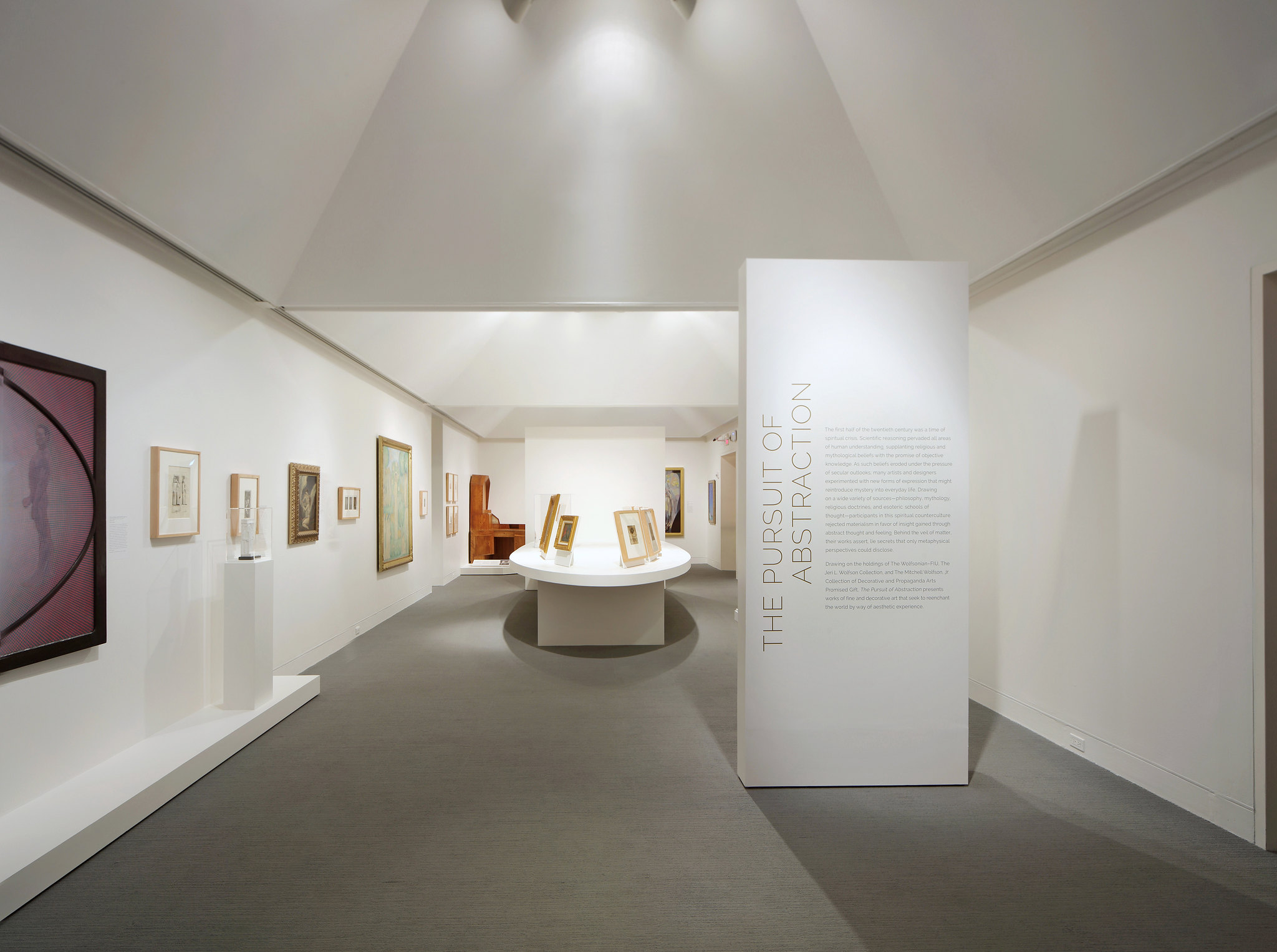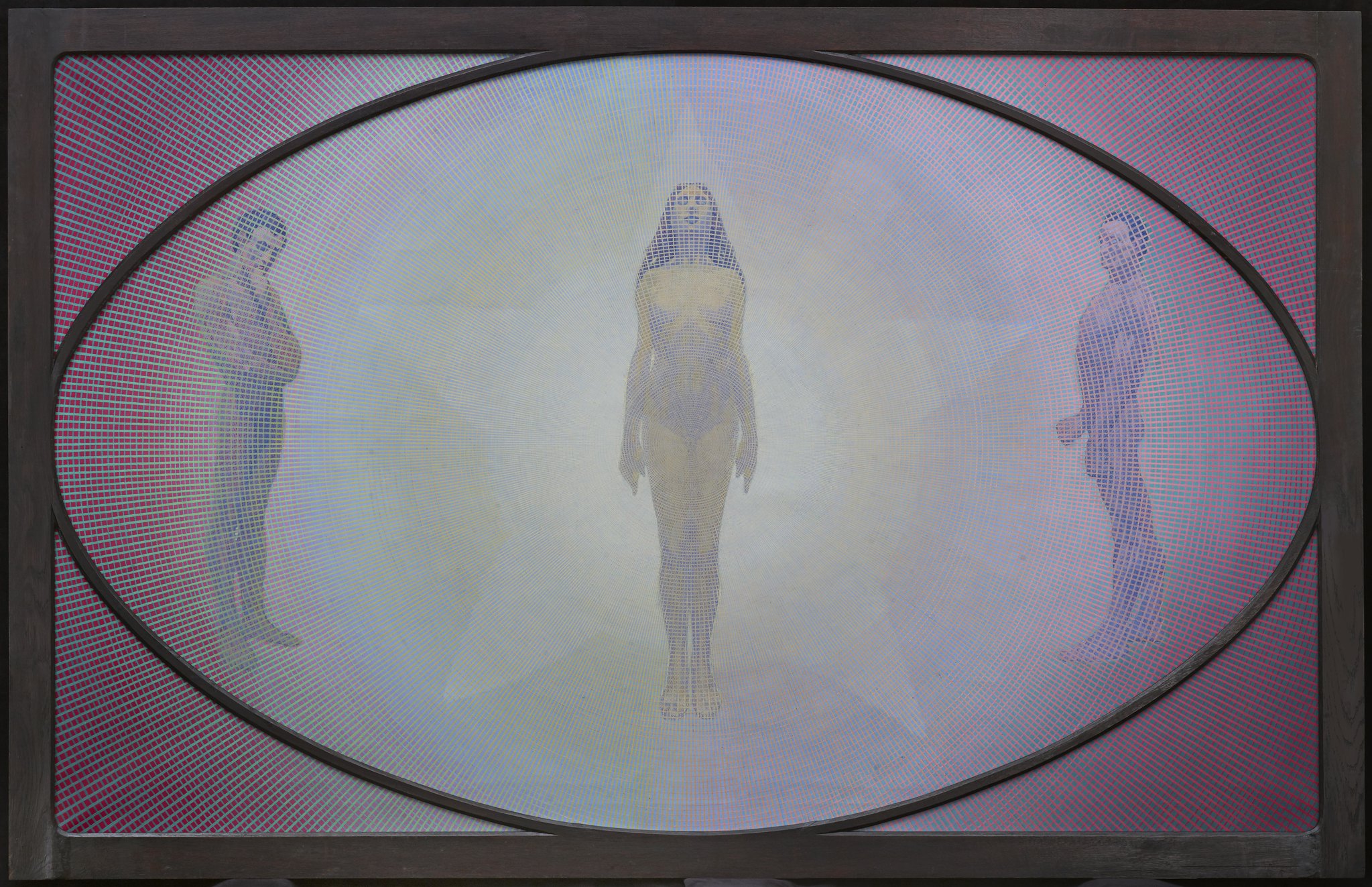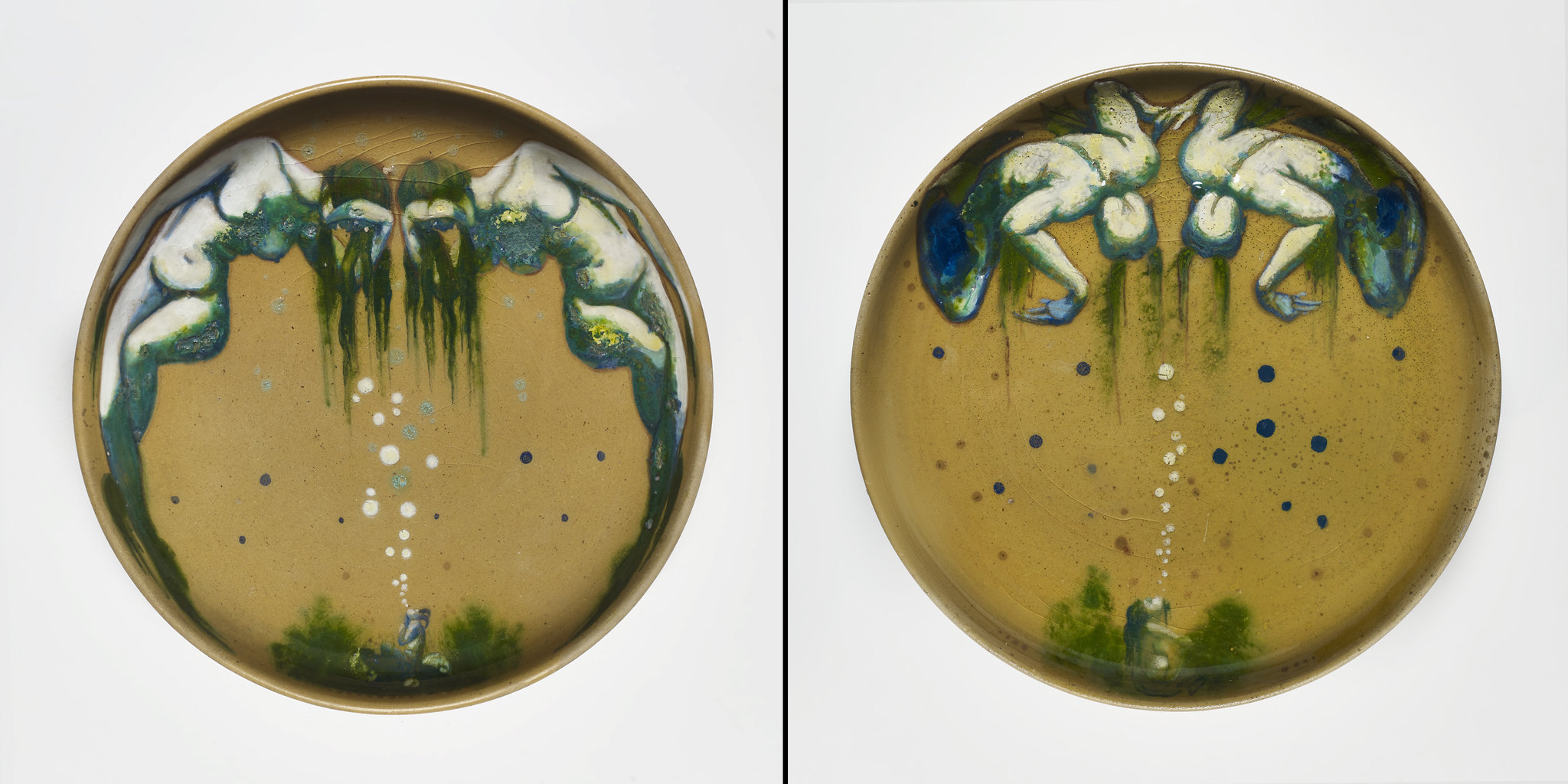The first half of the twentieth century was a time of spiritual crisis. Scientific reasoning pervaded all areas of human understanding, supplanting religious and mythological beliefs with the promise of objective knowledge. As such beliefs eroded under the pressure of secular outlooks, many artists and designers experimented with new forms of expression that might reintroduce mystery into everyday life. Drawing on a wide variety of sources—philosophy, mythology, religious doctrines, and esoteric schools of thought—participants in this spiritual counterculture rejected materialism in favor of insight gained through abstract thought and feeling. Behind the veil of matter, their works assert, lie secrets that only metaphysical perspectives could disclose.
Drawing on the holdings of The Wolfsonian–FIU, The Jeri L. Wolfson Collection, and The Mitchell Wolfson, Jr. Collection of Decorative and Propaganda Arts Promised Gift, The Pursuit of Abstraction presented works of fine and decorative art that seek to reenchant the world by way of aesthetic experience.
The exhibition was organized by The Wolfsonian–FIU and made possible by Funding Arts Network (FAN), Inc. and Northern Trust. We extend our gratitude to Jeri L. Wolfson and Mitchell Wolfson, Jr. for their generous loans, and wish to recognize their important contributions to the reconsideration of the often marginalized art and artists on view.
Exhibition History:
Debuted at The Wolfsonian–FIU in Miami Beach, Florida (October 6, 2016–April 16, 2017)
Traveled to The Baker Museum at Artis–Naples in Naples, Florida (May 13–July 23, 2017)



